I'm an American who attended my first World Cup in Qatar. Here's what it was like on the ground.
Max Liebler

- I traveled to Qatar to attend the 2022 World Cup, the first ever to be held in the Middle East.
- Visitors were expected to follow a dress code and could not drink alcohol in the stadiums.
I went to the 2022 FIFA World Cup in Qatar.
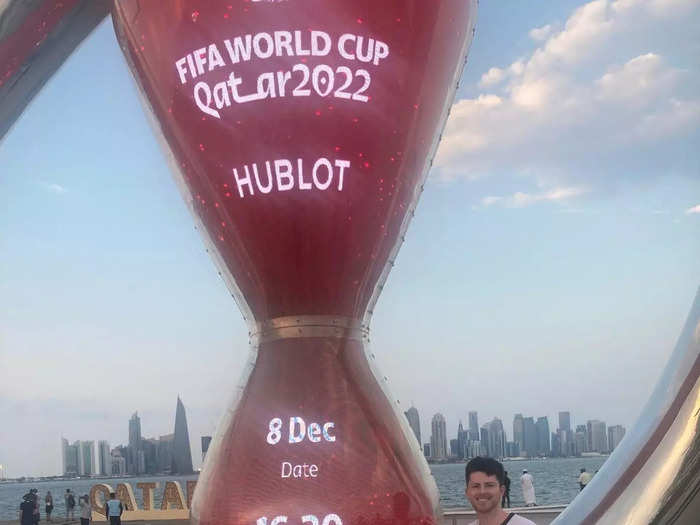
I attended my first World Cup in Qatar from November 19 to December 11.
This was the first World Cup to be held in the Middle East, and FIFA and Qatar have faced multiple controversies since it was decided the event would be held in Doha.
Qatar has faced accusations of forced labor and has been criticized for its treatment of migrant workers. Since work began in 2013, the Supreme Committee, the body tasked with organizing the World Cup, has pushed back against the accusations. In a statement obtained by The Guardian in April, the Supreme Committee said the "health, safety and dignity of all workers employed on our projects has remained steadfast and unwavering."
The country has also made headlines for its intolerance toward LGBTQ people, restrictions on public alcohol consumption, and dress code — among other rules.
I heard plenty about Qatar's strict social policies before coming to the Arab Gulf country.

Visitors were subject to Qatar's rules when they were in the country.
Some of them included Qatar's dress code that advises visitors, especially women, to dress modestly and cover their shoulders and knees in public spaces.
Public alcohol consumption is also generally illegal outside of specially licensed venues, and regular fans weren't permitted to drink alcohol in any of the eight stadiums.
Travelers couldn't bring drugs or pornographic material, including sex toys, into the country. Intercourse outside of marriage, homosexuality, and speech that's critical of Qatar is also criminalized there.
I was aware that I'd have to abide by Qatari restrictions while I was at the tournament, as ignoring or breaking them could lead to fines or jail time.
Here's what my experience was like on the ground.
From the time I flew into Doha, I was surrounded by soccer fans.
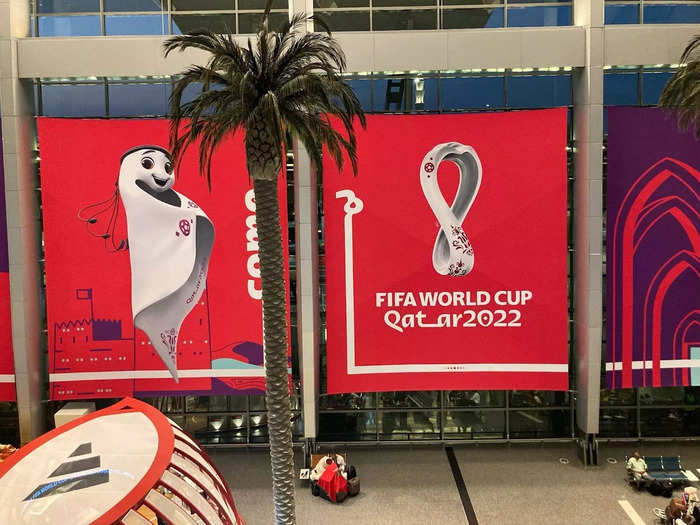
When I landed in Doha around 40 hours before the start of the 2022 FIFA World Cup, there was a buzz inside the airport — so many different people and cultures were converging in the same place. Qatar reportedly received over 765,000 visitors during the first two weeks of the tournament.
I was wearing my US Men's National Team jersey when I arrived and felt a natural bond whenever I ran into another US fan. I met a couple of them at the airport, and we stayed in touch over the course of our time in Qatar.
My first stop was the Barwa Barahat Al Janoub Clusters, where I stayed for the majority of my trip.
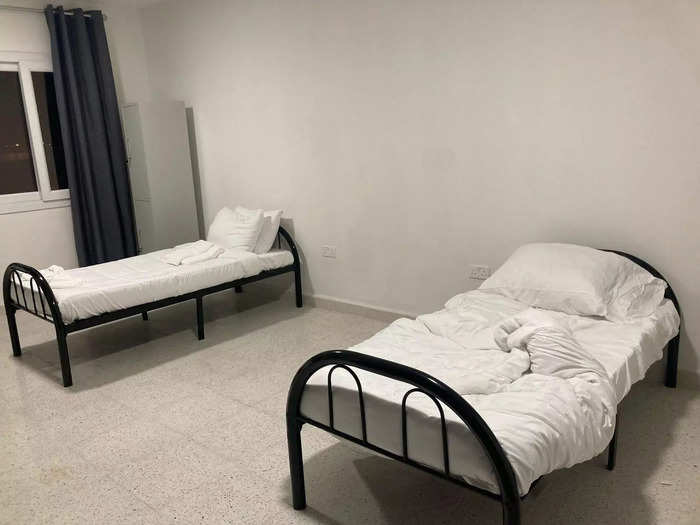
For the majority of the trip, I stayed at the recently built Barwa Barahat Al Janoub Clusters, located south of Doha in Al Wakrah, about 20 minutes from the airport.
The Barwa Accommodation Clusters was the cheapest accommodation option on the FIFA accommodation portal, and my room cost $84 per night. The facility was huge, with over 15,000 rooms, and will reportedly house low-income workers after the tournament ends.
My room was pretty plain and had just two beds, two closets, and a bathroom. Each one also had air conditioning, which was nice because the weather outside hovered around 85 degrees Fahrenheit. The area also had grocery stores and food stands.
Qatar has reportedly invested more than $229 billion in World Cup-related projects since winning the hosting bid in 2010, a portion of which has gone into infrastructure.
The country has refurbished its one existing stadium, built seven new ones, and aimed to construct enough accommodation sites to have 130,000 rooms available.
Some of the new hotels and fan attractions weren't ready in time for kick-off though, and Qatar has been criticized over the treatment of migrant workers hired to build and maintain some of the facilities needed to host the tournament.
The public transportation was convenient and easy to navigate.
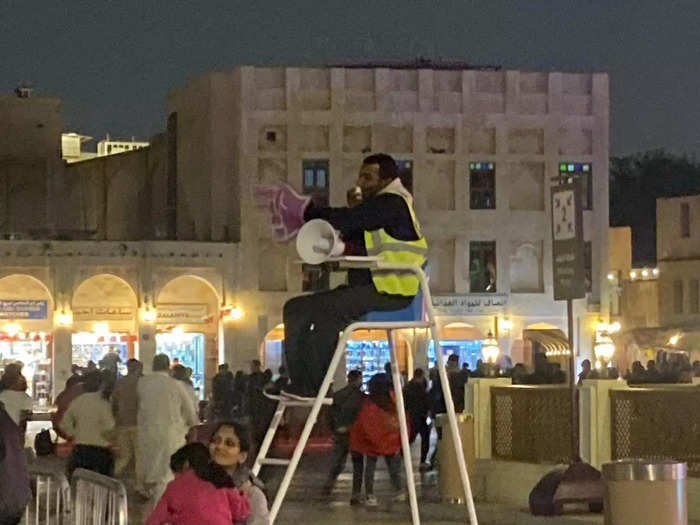
The metros and buses in Qatar ran nonstop until 3 a.m., and buses ran directly between my accommodation site and the stadiums as early as three hours before the start of each match.
There was also direct bus transit between stadiums, which was necessary for those attending back-to-back matches.
It was always easy to figure out where to go because there were many people in vests with megaphones who were able to point me in the right direction.
FIFA's ticketing system placed all the value on being lined up with midfield rather than proximity to the field.
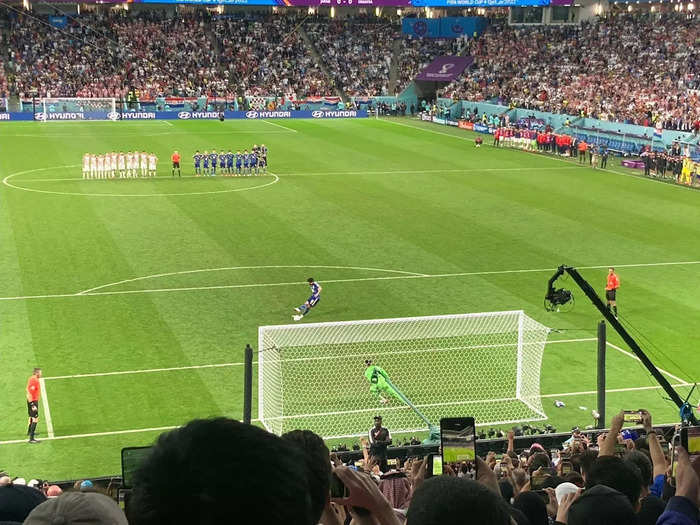
The tickets were separated into three tiers: Category one cost 800 Qatari rials, or about $220, while category two cost 600 rials, about $165. Category three cost 250 rials, about $70.
When I first bought tickets in August, I could only choose from the categories that were available, and FIFA randomly assigned my seats closer to the tournament.
When I bought tickets in November and December, I was finally able to select my seats. FIFA displayed the tickets in batches online, and it was challenging to get tickets for higher-demand games. I often had to refresh the page and quickly select a ticket as soon as it came up.
I always tried to find category-three tickets that were close to the field and avoid category-one tickets that were at midfield but further from the field.
I paid $69 for my category-three ticket to the Japan-Costa Rica match and ended up three rows behind the field, by the corner of the field.
The prices rose in the knockout rounds and got even more expensive as the tournament reached the quarter-finals.
I ended up going to 11 games in total and watched all of the US Men's National Team's matches.
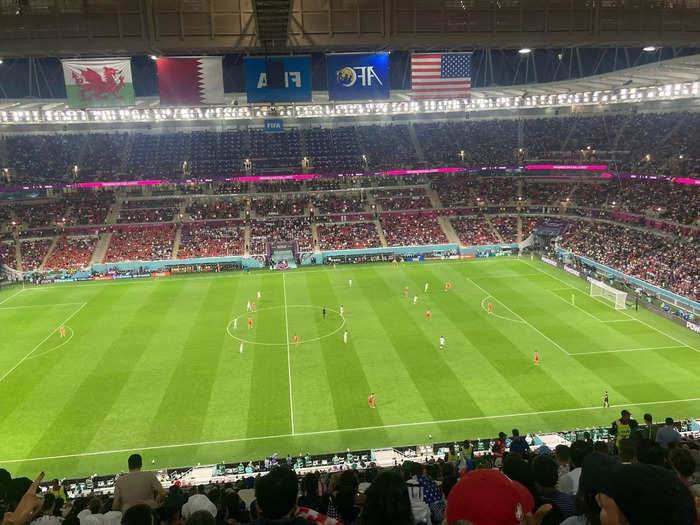
In total, I went to 11 games when I was in Doha. I attended each of the four US matches.
The first game I went to was the US' first group-stage match against Wales. It was my first time attending a US soccer match, and I paid $220 for my ticket.
My seat was right at midfield, but I was toward the back of the upper deck. I'd expected my seat to be better because I paid so much.
I had an easy time meeting people throughout the tournament.
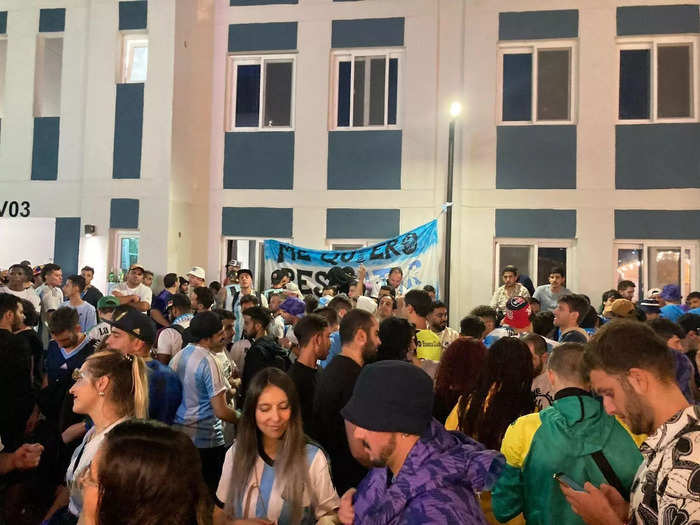
Meeting people from different countries was one of the easiest things to do at the World Cup, especially when I was at the FIFA Fan Festival, a large area outside of the stadiums in Al Bidda Park with huge screens showing the matches.
The Fan Festival was a great place to watch the games and was one of the few places in Qatar where I could buy alcohol.
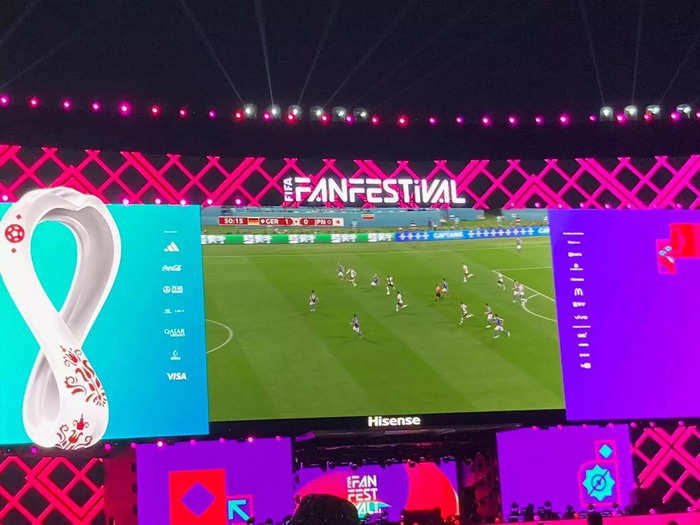
The Fan Festival was the place to be when I was without a match ticket.
I went there to watch the drama unfold during the third group-stage games, when two matches from the same group took place at once. The multiple big screens made it possible to simultaneously watch two games.
Even though public alcohol consumption is illegal in Qatar, the Fan Festival had a special license that allowed it to sell alcohol, albeit at a higher cost than I was used to. One beer cost 50 Qataris, or $13.74.
I knew to expect higher beer prices in Doha, as it's rare to find venues with a license to sell alcohol here.
The Fan Festival also had food stands and a number of other on-site activities, like interactive games and live music.
Between games, I visited Souq Waqif to eat and experience some Qatari culture.
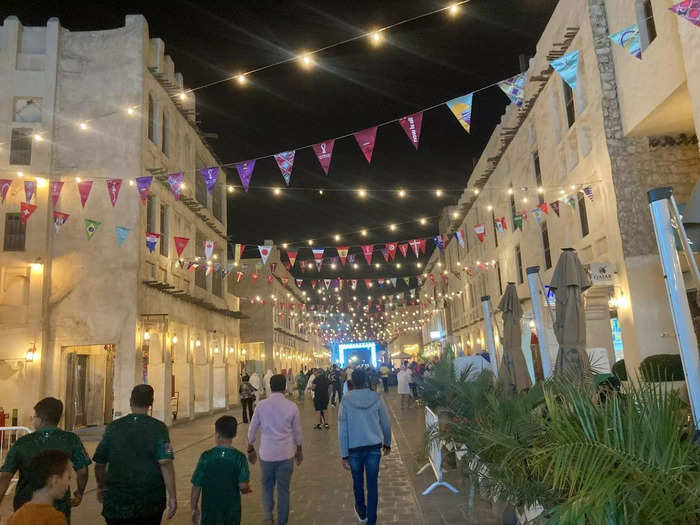
Before coming to Qatar, I'd heard that a market called Souq Waqif was one of the top tourist attractions.
The market was filled with restaurants as well as traditional Qatari food stands where I could get a quick, cheap bite to eat. Madrouba, a traditional dish with rice and meat, became one of my favorites.
Most of the food stands allowed customers to sample the dishes before making their selection. A small bowl cost only 15 rials, or about $4, and a large bowl ran closer to 20 rials, or roughly $5.
I also found that embracing the traditional dress was encouraged but not required.
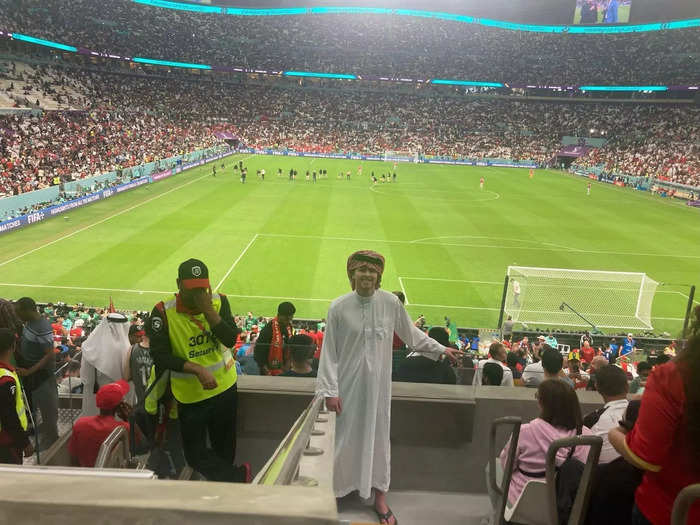
During my trip, I bought a traditional Qatari garment called a thobe — a long-sleeve shirt, robe, and headscarf with a ring around it — at Souq Waqif and wore it to matches during the World Cup. The thobe's two different parts cost around $33.
Some people even wore flag-inspired ones, which were being sold for the World Cup.
That said, visitors should make sure to wear the thobe respectfully. For example, you should not visit a nightclub in a thobe.
Going to Qatar for the World Cup was an experience I'll never forget.
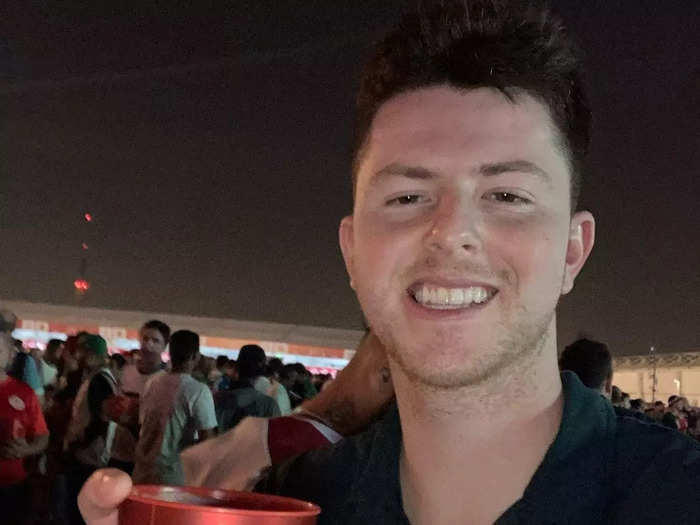
There's no bigger stage for soccer than the World Cup, and I could feel the tremendous passion for the game both in and out of the stadiums.
It was so thrilling to watch the matches in person and meet other fans from around the globe that I hope to attend every World Cup I can for the rest of my life.
Popular Right Now
Popular Keywords
Advertisement